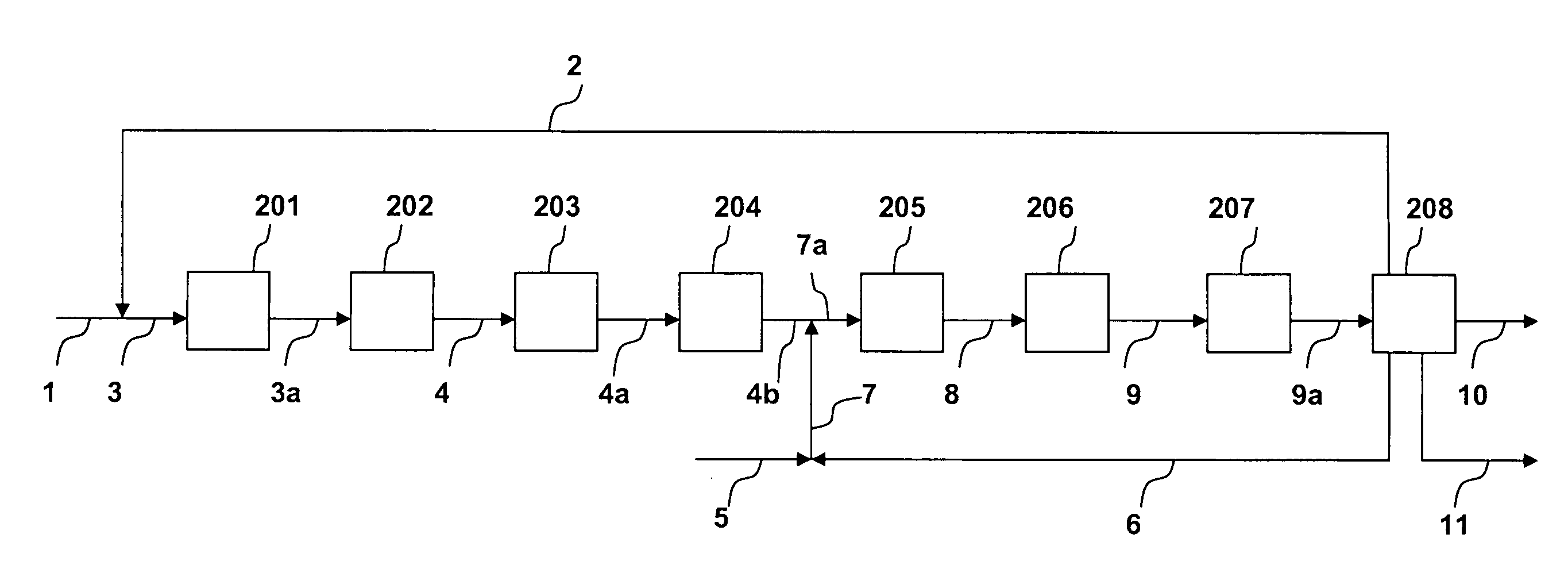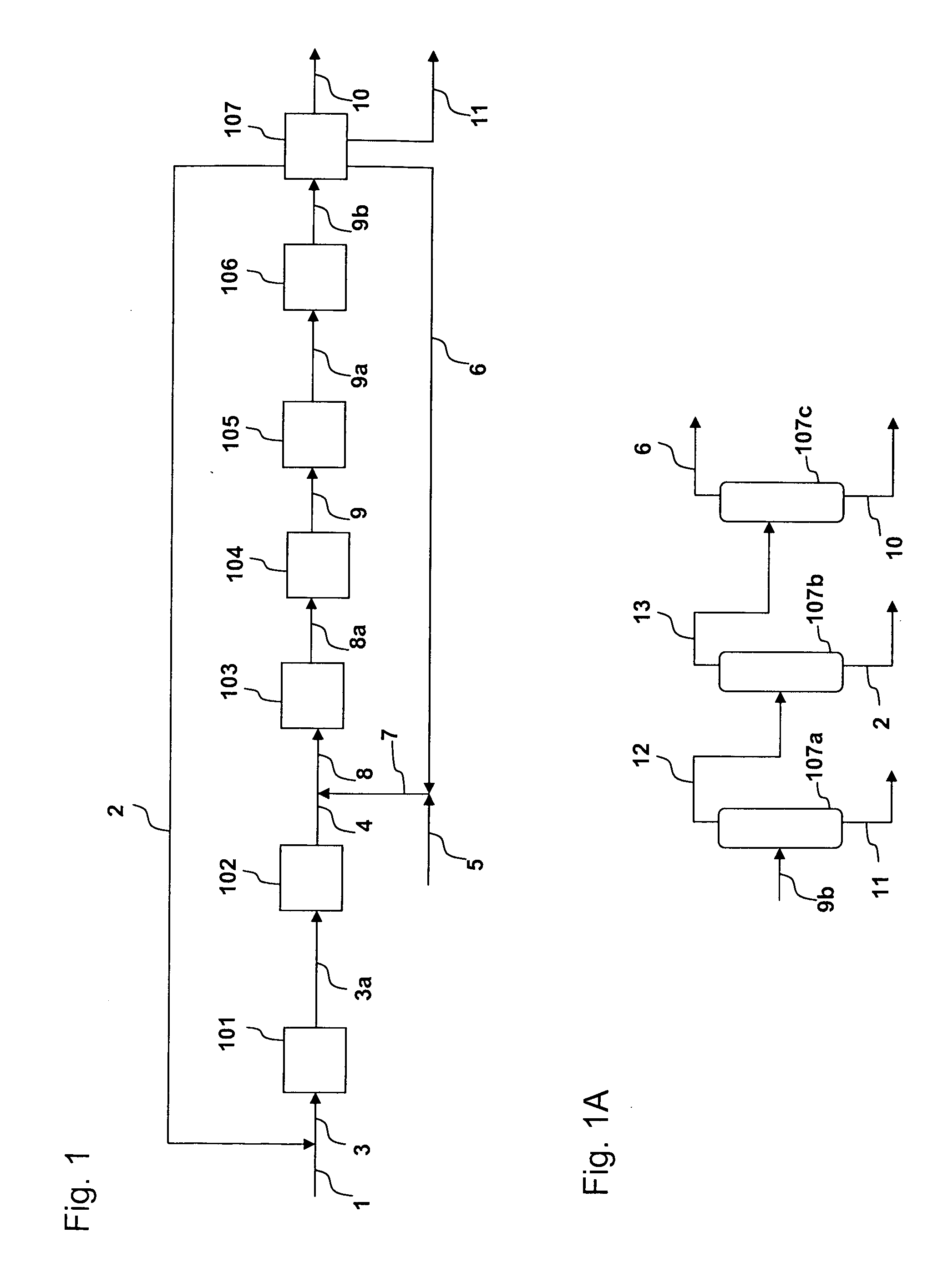Propylene production
a technology of propylene and propylene, which is applied in the direction of hydrocarbon by metathesis reaction, organic chemistry, chemistry apparatus and processes, etc., can solve the problems of severe thermal cracking, limited market demand for methyl tert-butyl ether, tert-butyl alcohol, or diisobuten
- Summary
- Abstract
- Description
- Claims
- Application Information
AI Technical Summary
Benefits of technology
Problems solved by technology
Method used
Image
Examples
example 1
[0027]The process is shown in FIGS. 1 and 1A. A fresh isobutene feed (100,000 lb / h) in line 1 is combined with a recycled C4 stream from line 2 to form a combined C4 feed in line 3. The combined C4 feed is heated in heating zone 101 to 700 F. The heated combined C4 stream, via line 3a, enters the skeletal isomerization reactor 102 to form an isomerized product stream. An H-Ferrierite catalyst described in Example 1 of U.S. Pat. No. 6,111,160 is used in reactor 102. The isomerization is performed at 700 F and 30 psig. The isomerized stream exits reactor 102 via line 4 at a temperature of 656 F and combines with the fresh ethylene feed in line 5 and a recycled ethylene stream in line 6. The combined feed is heated by heating zone 103 and enters a metathesis reactor 104 via line 8a. The metathesis reactor 104 contains a mixture of magnesium oxide and WO3-on-silica as disclosed in U.S. Pat. No. 5,120,894. The metathesis reaction is performed at 650 F and 30 psig. The metathesis product ...
PUM
| Property | Measurement | Unit |
|---|---|---|
| Pressure | aaaaa | aaaaa |
| Pressure | aaaaa | aaaaa |
Abstract
Description
Claims
Application Information
 Login to View More
Login to View More - R&D
- Intellectual Property
- Life Sciences
- Materials
- Tech Scout
- Unparalleled Data Quality
- Higher Quality Content
- 60% Fewer Hallucinations
Browse by: Latest US Patents, China's latest patents, Technical Efficacy Thesaurus, Application Domain, Technology Topic, Popular Technical Reports.
© 2025 PatSnap. All rights reserved.Legal|Privacy policy|Modern Slavery Act Transparency Statement|Sitemap|About US| Contact US: help@patsnap.com



